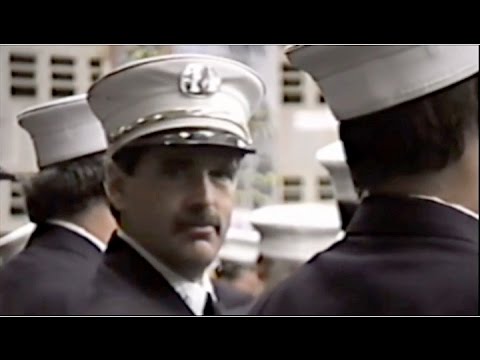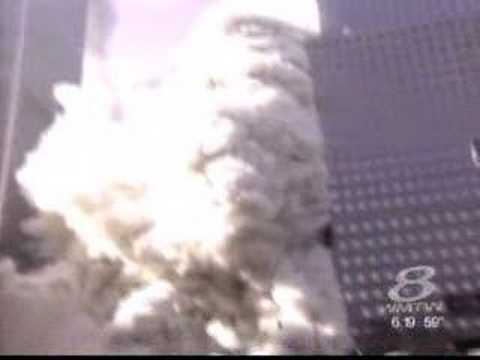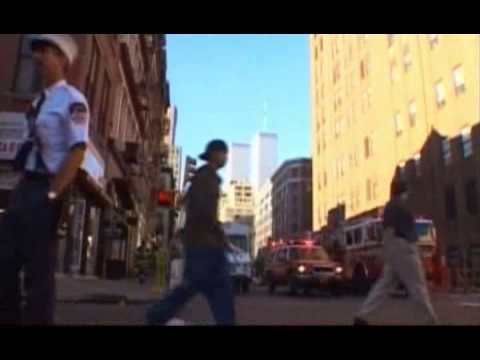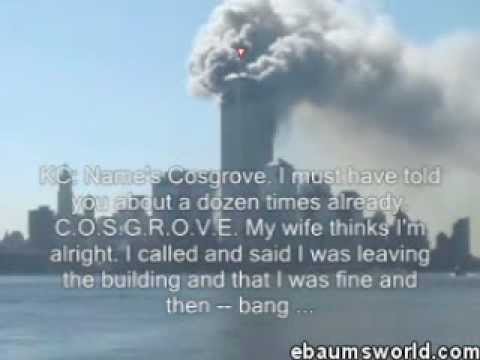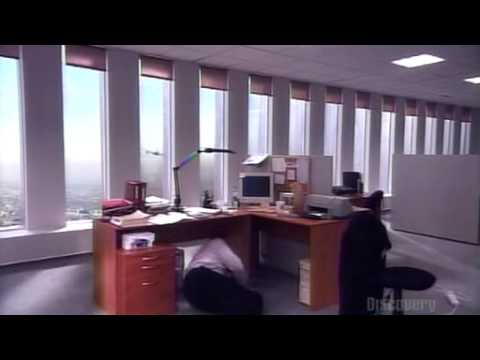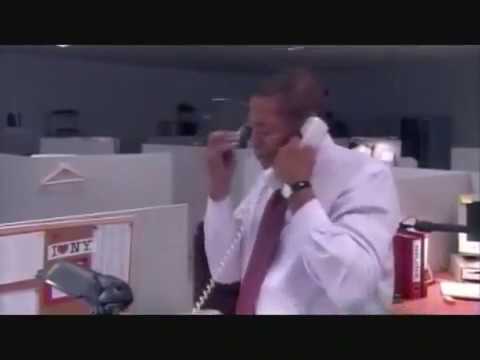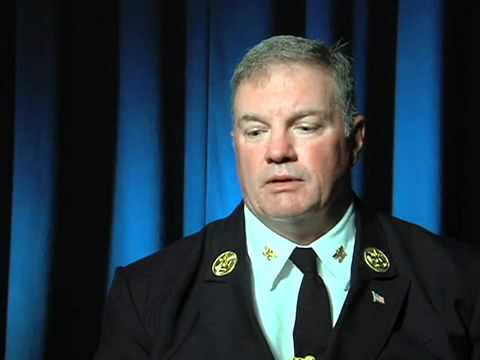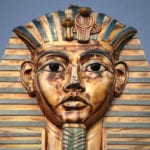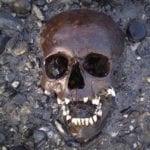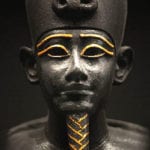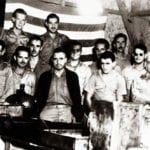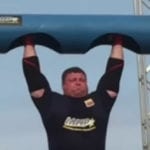TV coverage was largely from afar as journalists sought to remain safe and refrain from broadcasting the event’s most macabre spectacle—those jumping from atop the towers. They panned out while we leaned in. Viewers, then, were on the outside looking in, an impersonal perspective despite the thousands of flesh and blood souls scrambling to survive as the towers slowly died. Let’s explore some of what we missed that day: the stories of individual victims, survivors and heroes. 10 Famous People Who Avoided Death on 9/11
10 First Among First Responders
Even for the physically demanding job of firefighter, Battalion Chief Orio Palmer was in exceptional shape. The 45-year-old was an avid marathon runner, and on 9/11 his endurance proved unmatched among his peers. Though the planes impacted the upper floors of both buildings, the South Tower was struck slightly lower, from the 84th Floor down to the 78th. The latter was a Sky Lobby, a mid-building connection point where passengers switched from express elevators to ones servicing local floors. Firefighters faced a nearly impossible task: trekking up dozens of flights of stairs carrying gear that weighed upwards of 70 pounds while shooing aside tens of thousands of evacuees heading the opposite direction. Just a handful actually reached the impact zones, and the very first was Orio Palmer. After finding one of the few elevators still functioning, Palmer and his crew rode up as far as it would take them, the 40th floor. From there, Palmer sprinted ahead of his mates, and can be heard checking in repeatedly as he made superhuman progress up the stairs. Then, at about 9:44am, this: “We’ve got numerous 10-45 Code 1’s,” he says frantically, using the FDNY code for civilian fatalities. Palmer sent a small group of injured yet ambulatory civilians down the same stairwell he’d come up, with instructions to find the working 40th Floor elevator and ride it down. Unfortunately, the building collapsed before they made it out, showcasing the situation’s hopelessness despite Palmer’s incredible feat.
9 The Goriest Floor
What greeted Orio Palmer upon reaching the South Tower’s 78th Floor was the worst human wreckage anyone witnessed that day. Again, the 78th Floor was a Sky Lobby—a transition point between express and local elevators. And since so many in the South Tower decided to evacuate after the first plane struck the opposite tower, the Sky Lobby was packed with as many as 200 people[1] when United Airlines Flight 175 sliced through it at 9:03am. The blast blew everyone off their feet. “I flew from one side of the floor to the other,” recalls Ling Young of Aon Corporation. Clearing the blood off her glasses, she saw that “It was like a flat land. Everybody was lying down.” Judy Wein, also of Aon, was airborne long enough that she remembers pondering what a terrible way to die this was. When she landed, her ulna was shattered nearly beyond repair. They were among the fortunate few. Only 14 people survived.[2] Bodies were, simply, annihilated. Those that weren’t burned beyond recognition were severed in two, three, four pieces. Blood spattered what was left of the walls and pooled on the floor, with several survivors slipping in gore as they worked their way over the carnage toward the stairwell. The luckiest Sky Lobby survivor was Kelly Reyher[3] who’d just made the unwise decision to return to his 100th Floor office when the blast literally blew him into the elevator. He was knocked senseless, but came to and evacuated.
8 The Ticket Agent That Should Have Listened to His Gut
At 5:45am, he was greeted with a first-class, one-way ticket and an angry scowl from a man with an Islamic name. “I said to myself, ’If this guy doesn’t look like an Arab terrorist, then nothing does.’ Then I gave myself a mental slap, because in this day and age, it’s not nice to say things like this. [I said to myself] ‘You’ve checked in hundreds of Arabs and Hindus and Sikhs, and you’ve never done that.’ I felt kind of embarrassed.” That was Michael Tuohey, a ticket agent at Portland international Jetport in Maine, admonishing himself for being suspicious of the Middle Eastern man at his check-in counter. That man was Mohamed Atta[4] who, after Touhey dissuaded himself of his worst fears, caught his flight to Boston’s Logan Airport along with a companion, Abdulaziz Alomari. Once there, they boarded American Airlines Flight 11, which Atta crashed into the North Tower. Atta’s anger that morning stemmed from being informed he’d need to pass through security again upon arriving in Boston. “I thought there was one-step check-in,” he told Tuohey. He was wrong—and Tuohey was right to be suspicious. Had Tuohey acted on his first impulse, Atta and Alomari likely would have missed their flight[5] from Portland and, subsequently, never boarded Flight 11. And since Atta was that terrorist team’s pilot, his absence would have prevented the plane from being flown into a skyscraper. A few weeks later, Tuohey was shown a collection of photos and asked to pinpoint the men he’d served that day. “I went right to Atta,” he said. “It’s like the skull on a poison bottle. There’s no mistaking that face.”
7 The Day’s Other Suicide Mission
It’s well known that, as it became clear the attacks comprised multiple hijackings, fighter jets were scrambled to reassert control over the nation’s airspace. Coincidentally, the North American Aerospace Defense Command was conducting military exercises that day, so several jets stood ready for takeoff. Of course, the event’s condensed timeline and the nation’s sheer size combined to make intercepting the terrorist-piloted planes unlikely. By the time NORAD confirmed the reported hijacks weren’t merely drills, the North Tower had already been impacted,[6] and United Flight 175 was just 17 minutes from the South Tower. American Airlines Flight 77, which crashed into the Pentagon at 9:37am, wasn’t reported as a suspected hijacking until 9:00am[7]—an extremely tight intervention window. That leaves United Flight 93, which was delayed[8] prior to takeoff so remained in the sky well after the first three crashed. Much has been made about Vice President Dick Cheney’s order to shoot down[9] hijacked planes rather than have them crash into another target. The order ended up being moot, as it wasn’t given until after Flight 93 had crashed in a Pennsylvania field when passengers attempted to retake control from terrorists. But the fighters looking for Flight 93 wouldn’t have shot it down. They were unarmed,[10] because they didn’t have time to weaponize prior to takeoff. “We wouldn’t be shooting it down,” said pilot Maj. Heather Penney. “We’d be ramming the aircraft. I would essentially be a kamikaze pilot.” Like the firefighters, police officers and other first responders that day, fighter pilots were ready to make the ultimate sacrifice to save lives.
6 French Film Noir
French filmmakers Jules and Gedeon Naudet had an innocent enough project: a human interest documentary about FDNY firefighters. Ironically, through the summer of 2001 there was a dearth of serious fires, limiting the action. That all changed on September 11. Jules rode along to check out a minor gas leak in downtown Manhattan. Suddenly, the roar of an airplane flying far too low pierces the air. Jules swung his camera up just in time to capture the only footage of American Airlines Flight 11—the first plane—impacting the North Tower. That firehouse—home to FDNY Engine 7 and Ladder 1—was among the first to reach the World Trade Center. Jules would film the most inside look at what firefighters faced that awful day. Jules made some difficult choices along the way. Upon arriving at the North Tower, he encountered two people engulfed in flames after being splashed with burning jet fuel.[11] Jules chose not to point his camera at what his eyes were seeing. Soon, however, the day’s gruesomeness would become unavoidable. “At first, I heard this huge sound,” he said. “It was almost like a car that had been dropped from very high up, and it could be a piece of the building falling down.” “And then,” he continued, “I heard the firefighter behind me saying ‘OK, we’ve got jumpers.’” Jules decided not to film the remnants of bodies spattered on the pavement. However, at about 40 minutes into the finished documentary,[12] the crashes of bodies hitting the concourse bang out repeatedly, one extinguished life at a time. The film went on to win a broadcast journalism award. 10 Reasons Some Remain Suspicious Of The Official 9/11 Account
5 Last Call
Kevin Cosgrove was going to be OK. In fact, he’d just calmly called his wife to tell her as much. The Vice President at Aon Corporation, which occupied floors 98-105 of the South Tower, was handling his duties as his floor’s civilian fire warden, rounding up colleagues to evacuate before leaving himself. Something was obviously terribly wrong in the other tower and—despite announcements encouraging South Tower occupants to stay put[13]—Cosgrove and his coworkers had decided to err on the side of caution. And then, at 9:03am… a loud bang and a sickening quake. United Airlines Flight 175 had slammed into Tower Two, severing all but one staircase (which very few trapped in the South Tower ever learned about[14]—and quickly blanketing the upper floors with searing heat and suffocating smoke. Cosgrove and two colleagues ended up in an office where the smoke was less intense. Still, he knew he was in serious trouble. At 9:54am, he called 9-1-1 and alerted emergency dispatchers of his exact location. They called back a few minutes later, and Cosgrove answered. “Hello. We’re looking in… we’re overlooking the Financial Center. Three of us. Two broken windows.” Then, a gut-wrenching, crescendoing rumble. “Oh God! Oh—!” Cosgrove screams. The line cuts off as his floor joins the 110 other stories pancaking to the ground. Cosgrove’s audio was later used in the prosecution of Zacarias Moussaoui, a conspirator in the attacks.
4 One Man’s Lagging Cost Two Their Lives
The day’s most avoidable deaths may have been Victor Wald and Harry Ramos. The former was hindered by his own mental fragility; the latter died trying to save Wald from himself. Along with coworker Hong Zhu, Ramos was evacuating from the North Tower’s 87th Floor, a few floors below the impact zone. Notably, the plane made all staircases and elevators at and above impacted floors inaccessible—a demarcation line of doom.[15] Not so for those below the 92nd Floor, nearly all of whom escaped since the tower, despite being the first struck at 8:46am, was the second to collapse, at 10:28am. So Ramos and Zhu had ample time to descend to safety. Then they came across Victor Wald, a perfect stranger. As shown in Inside the Twin Towers (above), which blends interviews and dramatizations to portray stories of those evacuating the buildings, Wald was struggling mightily—physically but even more so mentally. He is shown pondering irrelevant questions, theorizing about those responsible for the attacks and, most frustrating of all, repeatedly pausing to rest and ruminate while the tower’s lifeline ticks down to zero. At the 36th Floor the trio encountered firefighters, who informed them that the other tower had collapsed. They urged Ramos and Zhu to leave Wald[16] and save themselves. Zhu listened; Ramos did not. Zhu survived; Ramos did not. In fact, Ramos was the only employee from his company, May Davis, to perish that day. Unfortunately Wald’s inability to save himself cost a would-be hero his life.
3 The Man Who Dodged a Plane
Only 18 people survived[17] who were at or above impact zones when the planes hit. All the them were in the South Tower, and perhaps the most incredible of these was Stanley Praimnath. An employee at Fuji Bank, Praimnath was on the 81st Floor when United Airlines Flight 175 slammed into it—smack dab in the middle of the plane’s deadly destruction of floors 78-84. He never should have been there. After the first plane hit the North Tower, Praimnath took the elevator down to the South Tower lobby, where a security guard assured him the building was secure. He went back up to his office with his boss, Kenichiro Tanaka,[18] who died that day. Shortly after arriving back at office, Praimnath looked out of his south-facing window. “I saw this giant aircraft … coming in slow motion towards me—eye level, eye contact. And I just froze.” He unfroze just in time to dive under his desk as United Flight 175 smashed through walls, brought down the ceiling and annihilated every desk—except the one he’d ducked under. Praimnath was buried in rubble and, testament to his closest of calls, a piece of the plane’s wing was wedged in his office door.[19] A perfect stranger, Brian Clark, heard Praimnath’s subsequent cries for help and freed him from the debris. The two descended to safety.
2 “And Her Unborn Child”
Among the victims that day, 10 were known to be pregnant.[20] On official memorials, their names include those four terrible words—”and her unborn child”—after each woman’s name. Of this upsetting subset, none is more heartbreaking than Patricia Massari. Massari worked for Marsh & McLennan Company on the 98th Floor of the North Tower. Along with more than 1,350 other Tower One workers, her fate was sealed early that day— at 8:46am, when the first plane, United Flight 11, slammed into the North Tower, obliterating access to all staircases and elevators for those at or above its point of impact. She had no chance. Patricia was on the phone with her husband, Louis, when the plane hit, very near her office. ”Oh my God,” she exclaimed… and their connection was cut forever. It’s unclear whether she was killed during the initial impact, the ensuing fire, or the building’s collapse. Their conversation was about the pregnancy test Patricia had taken just that morning. It was positive,[21] and would have been the couple’s first child. Massari was just 25 years old.
1 A Bubble in the Rubble
After ascending 27 floors of the North Tower by 10:00am, FDNY Ladder Company Captain Jay Jonas gave the wisest order of his career. “I’m pulling the plug,” he told his crew. It was time to leave, on the double. Jonas’ crew was still 60 floors shy of reaching Tower One’s impact zone, and had just learned that the South Tower had collapsed. Jonas realized the only lives he’d be able to save were those of his fellow firefighters. On Floor 20, that number grew by one when the team came across Josephine Harris,[22] a bookkeeper for the Port Authority who’d been injured in a car accident two weeks earlier. Adding Harris to the group significantly slowed their descent. “We want to stay together as a unit,” Jonas recalls,[23] “but now we’re going one step at a time. Step by step. We’re not going step, step, step. We’re going step…step…step…” It wasn’t fast enough. The group was on the 4th Floor when the tower began to collapse. They ducked, braced and prayed as the booms of pancaking floors drew ever nearer. “I kept waiting for that big beam to hit or that big piece of concrete to come down and crush us.” And then it stopped. The building’s sheer enormity saved Jonas and his team: at 110 stories tall and a full acre per floor, the imploded building’s rubble piled higher than four stories. That, coupled with his staircase’s unique location at the building’s center, left pockets of life for evacuees as high as Floor 22 in what has become known as the Miracle of Stairwell B.[24] 10 Disturbing Raw Videos From 9/11 About The Author: Christopher Dale (@ChrisDaleWriter) writes on politics, society and sobriety issues. His work has appeared in Daily Beast, NY Daily News, NY Post and Parents.com, among other outlets. Read More: Twitter Website
